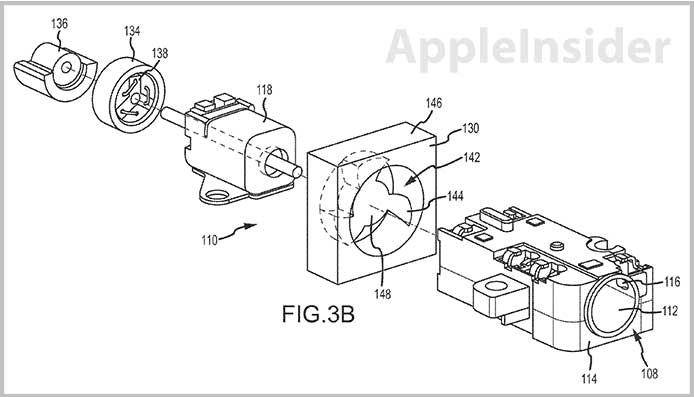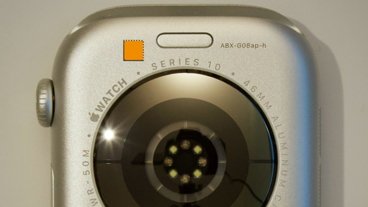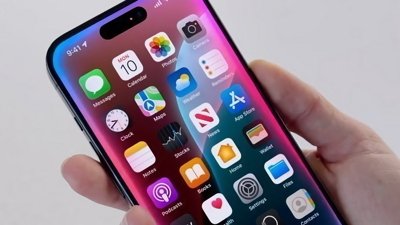It was revealed in a patent filing on Thursday that Apple is exploring the use of mechanical fans in portable devices, like the iPhone and iPad, to dissipate the heat made by increasingly powerful CPUs.
The invention discovered by AppleInsider is called "Cooling system for mobile electronic devices," and basically outlines a platform that uses a motor to drive two parts, a fan and an alert device.
In one embodiment, the motor drives a fan to dissipate heat by "exchanging air between an inner cavity of the mobile computing device and an outer environment," while a clutch and drum setup allows the same motor to drive an alert device like a vibrator. By joining the two operable components to one motor, space is saved in the already cramped chassis seen in current iPhone iterations such as the iPhone 5.
Assembled cooling and alert unit.Cooling is taken care of by the fan unit, which is situated in a cavity within the device. Air is pulled in either by a dedicated input port, or through an existing structural component like the Lightning connector plug or earphone jack. Exhaust is pushed out of the device via a similar hole in the chassis.
Going further, the system can dynamically drive either the fan, alert device, or both, by employing a clutch that can switch power to either component. To do so, the clutch may selectively engage and disengage the fan or vibrator based on the rotational speed of the drive shaft. For example, the centrifugal force created by the motor may reach a point where engagement members on a drum shaft or second drive shaft extend outward. These members can engage the inside of a drum, thus causing the drum drive shaft to rotate.
Illustration of centrifugal force activating engagement members.More advanced methods of connecting the motor to the fan and vibrator units are described, though are based on the same principles.
It is unclear if Apple plans to use the invention in an upcoming iDevice, but it seems doubtful that such additional components can reasonably fit within the iPhone, which becomes increasingly thin with each design evolution.
The iPad would be better suited for such a system, as consumers have complained of high temperatures generated when operating the device for extended periods of time, or running CPU-intensive apps. With the new fourth-generation iPad's switch to the Lightning connector, there is extra space within the aluminum chassis for the platform, however Apple has previously boasted that the tablet's design does not need noisy cooling fans.
 Mikey Campbell
Mikey Campbell




-xl-m.jpg)


-m.jpg)






 William Gallagher
William Gallagher
 Andrew Orr
Andrew Orr

 Christine McKee
Christine McKee
 Chip Loder
Chip Loder
 Thomas Sibilly
Thomas Sibilly
 Wesley Hilliard
Wesley Hilliard









53 Comments
Personally, I'm not a big fan of this idea.
Here come the Apple Fan Boyz...
Sounds fantastic!
You'd end up with a paradox - a guy who is a fan of the fan will be an Apple fandroid!
As a related topic, is there any news of iPad 4 being as thermically hot as the iPad 3? Or is the A6X CPU a cooler chip?